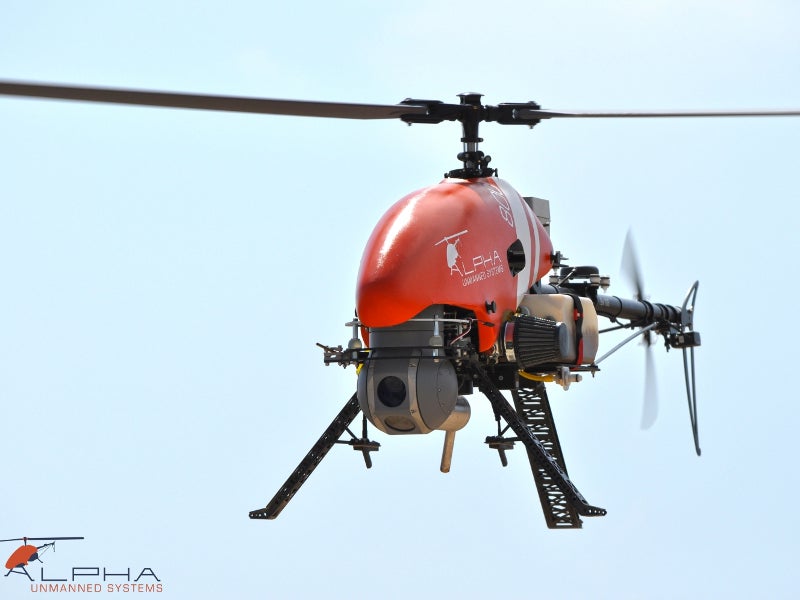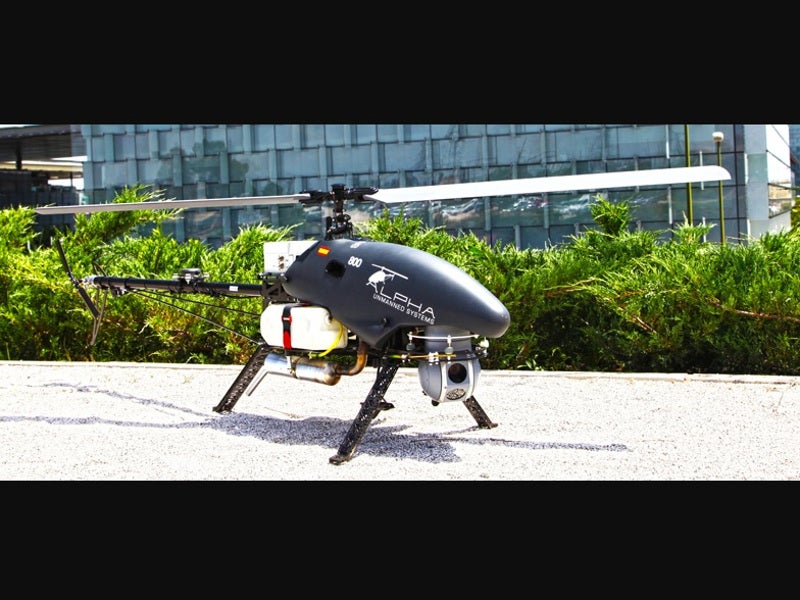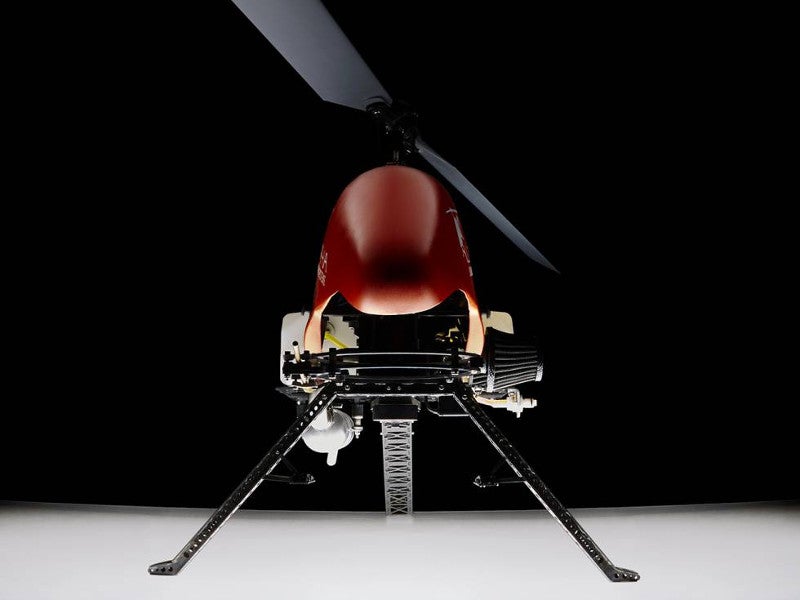Alpha 800 unmanned aerial vehicle (UAV) is manufactured by Alpha Unmanned Systems (AUS). The unmanned rotorcraft is configured to perform multiple tasks including reconnaissance, surveillance, inspections, and delivery of emergency supplies.
The medium-range platform is designed for surveillance and target acquisition and is capable of detecting surface targets in all weather conditions.
Classified by North Atlantic Treaty Organization (Nato) as a Class 1 Mini UAV for tactical operation, the UAV is extensively used in Asia, Middle East, and Europe for border control and surveillance.
The Alpha 800 unmanned system was first launched in February 2017, as a successor to the Sniper vertical take-off and landing (VTOL) UAV. The Spanish Army acquired two Alpha 800 UAVs through the General Directorate of Armament and Material (DGAM) in December 2018.
The UAV also exhibited its capabilities during Nato’s Trident juncture and SASEMAR maritime rescue exercises.
Alpha 800 design and features
Alpha 800 UAV offers improved performance than its predecessor. It features a carbon fibre structure, which is among the lightest and the strongest airframes in its category. The light-weight structure increases the rotorcraft’s operational range, while the large rotor disk fitted to the aircraft ensures superior wind stability.
The VTOL UAV has a length of 1.7m, a height of 0.6m, and a rotor diameter of 1.8m. Powered by gasoline, the Alpha 800 weighs 14kg and can carry a maximum payload of 3kg.
The latest version of Alpha 800 features new software from Sightec, which enables the UAV to capture high-resolution images and detect moving objects efficiently.
Avionics onboard Alpha 800
In co-operation with UAV Navigation, AUS introduced a fully-automatic auto-rotation feature for the Alpha 800 aircraft. The auto-rotation is one of the safety elements offered by Vector, an autopilot system intended for aerial target and unmanned aircraft platforms.
Payloads attached to Alpha 800
The Alpha 800 is integrated with multiple payloads, including electro-optical (EO) / infrared (IR) sensors, light detecting and ranging (LIDAR), radio relay, laser altimeter, and transponder.
Dual sensor cameras installed on the aircraft provide day and night vision. The sensors support 40x optical zoom and high-resolution imagery. The multiple payload configurations aboard the UAV allow it to detect, identify, classify, and neutralise conventional and non-conventional threats.
The standard payload capacity of the aircraft is 3kg, while a heavily configured version can carry up to 4.9kg.
Navigation and communications of Alpha 800
Alpha 800 UAV is configured to function in fully-autonomous and manual modes. It features a military-grade autopilot system with high-accuracy global positioning system (GPS) and other sensors. It can fly in GPS-denied locations and also operate without onboard magnetometer.
The VTOL aircraft uses a high-performance global navigation satellite system (GLONASS) with optional real-time kinetic (RTK) and anti-jamming protection. It is also equipped with on-board alternator.
Ground control station details
The UAV is controlled by a GCase ground control station (GCS) equipped with a ruggedised laptop, a joystick, and two display units. The GCS is powered by an onboard battery with up to 13 hours of operation.
Stowed in a handy, water-proof Peli case, the GCS supports up to four channels for the operation of multiple UAVs. The control station is also complemented by a GTrack antenna and tracking system.
Performance of Alpha 800
The VTOL aircraft is powered by a two-stroke, 32cc gasoline engine, which develops a maximum power output of 2.4kW. It is easily manoeuvrable and can be unpacked, checked, and launched within seven minutes.
The Alpha 800 unmanned rotorcraft has an endurance of three hours and can be operated within a range of 30km. It has a maximum cruise speed of 55km/h and can fly at a maximum altitude of 3,000m. The UAV has the capacity to hold 3.6l of fuel.






